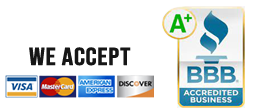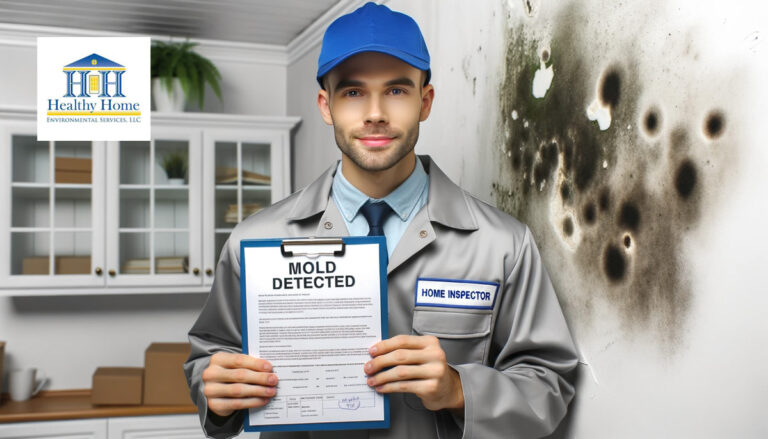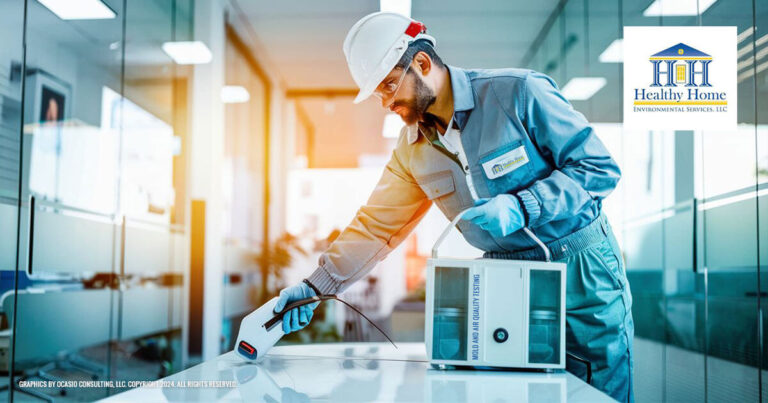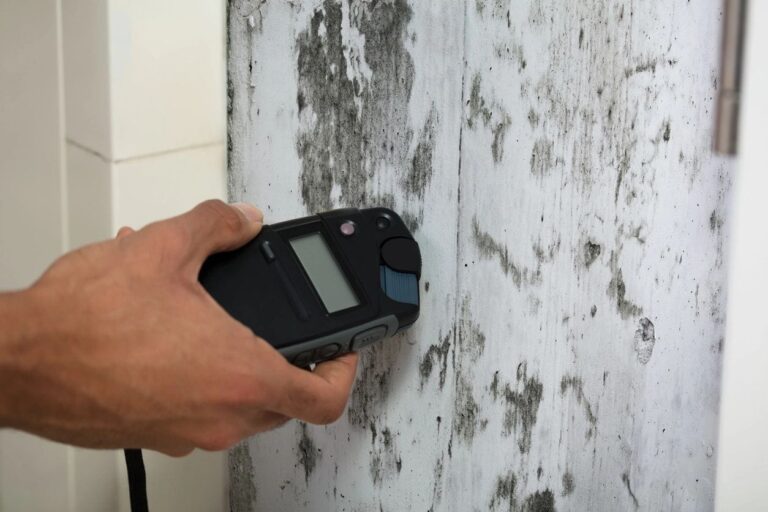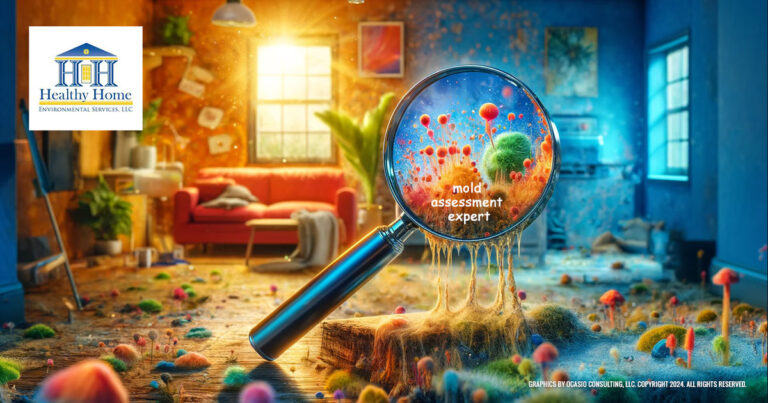Choosing the Right Company for Mold Inspections: A Guide to Companies That Check for Mold in House

Key Takeaways
| Topic | Details |
|---|---|
| Importance of Mold Inspections | Explaining the necessity of professional mold inspections in homes |
| Choosing the Right Mold Inspection Company | Criteria for selecting companies for mold inspection |
| Mold Inspection Process | A look into what happens during a mold inspection |
| Cost and Time Considerations | Average costs and time required for mold inspections |
Introduction
Mold – a word that can evoke concern in any homeowner. It’s not just an unsightly issue; mold can have serious implications for both the health of a home’s inhabitants and the structural integrity of the property. In regions with high humidity or susceptibility to water damage, such as those served by Healthy Home Environmental Services in Orlando, understanding the significance of mold and how to effectively manage it is essential.
This article delves into the crucial role played by professional mold inspection companies. We’ll explore why these services are indispensable for maintaining a healthy living environment, what to look for when choosing a company that checks for mold in house, and the various steps involved in the inspection process. Additionally, we will touch upon the financial aspects, legal considerations, and the pivotal role mold inspections play in real estate transactions.
Equipped with this knowledge, homeowners can make informed decisions, ensuring their homes are safe, healthy, and free from the risks associated with mold. So let’s dive into the world of mold inspections and uncover everything you need to know to protect your home and health.
Understanding the Need for Professional Mold Inspections
Mold infestations in homes or offices can pose significant health risks and structural damage. Identifying mold problems early is crucial, and this is where professional mold inspection and testing companies come into play.
These companies specialize in detecting, assessing, and recommending solutions for mold issues. Especially in humid areas, like those served by Healthy Home Environmental Services (HHES) in Orlando, vigilant mold monitoring is essential.
But why can’t homeowners just look for mold themselves? The truth is, mold can often lurk in places not visible to the untrained eye, such as behind walls or under floors. Moreover, different types of mold have different implications, and professional inspectors can identify these types accurately.
Criteria for Choosing Mold Inspection Companies
When looking for companies that check for mold in homes, there are several factors to consider to ensure you get reliable and effective service:
- Certifications and Experience: Look for companies with certified professionals who have extensive experience in mold inspection. This ensures they have the necessary knowledge and skills.
- Comprehensive Services: Choose a company that offers a range of services, from inspection to remediation advice. For instance, Healthy Home Environmental Services provides a complete spectrum of services, including radon, mold, and lead testing services.
- Customer Reviews: Customer feedback is invaluable. Check for reviews or testimonials to gauge the company’s reputation and service quality.
- Cost Transparency: Ensure the company provides clear information about its pricing. For example, mold inspection costs can vary, so it’s crucial to have an upfront understanding of potential expenses.
- Technology and Methods Used: Advanced technology and proven methods are critical for accurate mold detection and analysis.

The visualized data provides a comprehensive overview of the key topics discussed in the article about mold inspections. It highlights the relative importance of each aspect, from the necessity of mold inspections to the legal considerations involved. This visualization helps in understanding the various components that contribute to effective mold management in homes.
What Happens During a Mold Inspection?
A mold inspection involves several steps to accurately identify and assess mold issues in a home:
- Visual Inspection: The process starts with a thorough visual examination of the property to identify visible signs of mold.
- Sampling: In some cases, samples of air, surface, or material might be taken for laboratory analysis to identify mold types and spore counts.
- Moisture Assessment: Since mold thrives in moist environments, inspectors will look for sources of moisture that could be contributing to mold growth.
- Reporting: After the inspection, the company will provide a detailed report of their findings, along with recommendations for remediation if necessary. For a detailed guide on this process, visit mold inspection step-by-step guide.
Cost and Time Considerations for Mold Inspections
The cost of a mold inspection can vary based on several factors, including the size of the property and the extent of the inspection required. On average, mold inspection costs range from $300 up to $1,100. The time taken for the inspection can also vary, typically taking anywhere from 2 to 6 hours.
For homeowners, understanding these aspects is crucial when planning for a mold inspection. It’s a necessary investment for the health and safety of the home’s occupants and for maintaining the property’s structural integrity.
Dealing with Mold: Post-Inspection Actions
Once a mold inspection is completed, what comes next? If the inspection reveals mold presence, taking prompt action is crucial. Here are steps to follow after a mold inspection:
- Understanding the Report: Carefully review the inspection report. It should detail the types of mold found, locations, and severity of the infestation.
- Consulting with Professionals: Discuss the findings with the inspection company. They can provide guidance on whether mold remediation is necessary and the extent of it. For an in-depth understanding, see what to do after mold remediation.
- Choosing a Remediation Company: If remediation is needed, select a reputable company. Ensure they follow proper procedures to safely and effectively remove the mold.
- Preventative Measures: Implement recommendations to prevent future mold growth. This might include fixing leaks, improving ventilation, or controlling humidity levels.
Real Estate Considerations and Mold
Mold can be a critical factor during real estate transactions. Here’s why a mold inspection is vital when buying or selling a property:
- For Sellers: Identifying and addressing mold issues before listing a property can enhance its market value and prevent delays in the selling process.
- For Buyers: Conducting a mold inspection ensures that the property is safe and free from potential health hazards or future costly repairs.
- Disclosure Requirements: In many regions, sellers are required to disclose known mold issues to potential buyers.
Identifying Hidden Mold in Homes
Mold isn’t always visible. It can hide behind walls, under floors, or in other concealed areas. Here are signs that might indicate hidden mold:
- Musty Odors: A persistent musty smell can be a sign of hidden mold.
- Water Damage: Areas with past water damage are prone to mold growth.
- Health Symptoms: Unexplained allergies or respiratory issues can be triggered by mold spores.
- Visual Signs: Discoloration or peeling paint may indicate moisture problems and possible mold growth behind the surface.
For detailed insights, refer to signs of mold behind walls.
Advanced Mold Inspection Techniques
Professional mold inspectors utilize advanced techniques and tools for accurate detection:
- Infrared Cameras: These cameras can detect temperature variations in walls and floors, indicating potential moisture problems.
- Moisture Meters: These devices measure the moisture content in various building materials, helping to locate potential mold growth areas.
- Air Sampling: Collecting air samples helps determine the concentration of mold spores in the indoor environment.
- Surface Sampling: This involves collecting samples from surfaces to identify visible or suspected mold growth.
These advanced techniques ensure a thorough and accurate assessment of a home’s mold situation.
Mold Types and Health Implications
Understanding different types of mold and their health implications is crucial for homeowners. Common household molds include:
- Aspergillus: Often found on food and in air conditioning systems, this mold can cause respiratory infections and allergic reactions.
- Cladosporium: Typically found on fabrics and wood surfaces, it can trigger asthma and allergy symptoms.
- Stachybotrys (Black Mold): Known for its black appearance, it’s often associated with severe health issues like respiratory problems and allergic reactions.
Each type of mold has unique characteristics and health risks. For more details on different molds and their implications, visit black mold vs. mildew: what’s the difference.
DIY vs. Professional Mold Testing
While DIY mold testing kits are available, they often lack the accuracy and thoroughness of professional testing. Professional mold testing companies provide:
- Expert Analysis: Professionals can accurately identify mold types and concentrations.
- Comprehensive Inspection: They cover all potential mold hotspots, ensuring no area is overlooked.
- Detailed Reporting: The reports include specific details and recommendations for remediation.
For a comprehensive understanding of mold testing services, see top-rated professional mold testing services.
Mold Prevention Strategies
Preventing mold growth is easier than dealing with an infestation. Here are key strategies:
- Control Humidity: Keep indoor humidity levels below 60% to discourage mold growth.
- Ventilation: Ensure proper ventilation in areas like bathrooms, kitchens, and laundry rooms.
- Regular Cleaning: Regular cleaning, especially in moisture-prone areas, can prevent mold buildup.
- Fix Leaks: Promptly repair any leaks in roofs, walls, or plumbing to prevent moisture accumulation.
Implementing these strategies can significantly reduce the risk of mold growth in homes. For more prevention tips, explore top mold prevention strategies.
Choosing the Right Time for Mold Inspection
Timing can be crucial when it comes to mold inspections. Consider scheduling an inspection:
- After Water Damage: Following any flooding or significant leaks.
- Before Real Estate Transactions: As part of the property assessment process.
- Regular Maintenance: Periodically, especially in older homes or humid climates.
Scheduling inspections at these times can help catch mold problems before they become severe. For a seasonal approach to mold inspections, refer to Florida summer: not just hurricane season, it’s mold testing season.
Impact of Mold on Indoor Air Quality
Mold significantly impacts indoor air quality, which can affect the health of a home’s inhabitants. Mold spores circulating in the air can lead to various health issues, from mild allergic reactions to more severe respiratory conditions. Ensuring good air quality is essential, especially in homes that have had mold problems in the past.
To improve indoor air quality post-mold remediation, consider:
- Using Air Purifiers: Air purifiers with HEPA filters can help remove mold spores and other allergens from the air.
- Regular Ventilation: Opening windows and using exhaust fans can help reduce indoor moisture levels, a key factor in mold growth.
- Routine Maintenance: Regularly inspecting and cleaning HVAC systems can prevent mold spores from circulating through air ducts.
For more information on how air purifiers can aid in controlling mold, visit do air purifiers help with mold in your home.
Legal Considerations and Mold Disclosure
In many areas, there are legal requirements related to mold disclosure during property transactions. Sellers may be required to disclose past or present mold issues to potential buyers. This legal obligation emphasizes the importance of regular mold inspections and addressing any issues promptly.
Understanding these legal requirements is crucial for both buyers and sellers to ensure compliance and avoid potential disputes. To learn more about legal considerations regarding mold, check out the importance of mold inspections in preventing health hazards in your home.
Conclusion
Mold inspections are a critical component of home maintenance, especially in regions prone to high humidity or water damage. Regular inspections by professional companies can identify potential problems early, preventing extensive damage and health issues. Homeowners should be aware of the signs of mold, understand the inspection process, and know the steps to take if mold is found.
By choosing the right mold inspection company, being aware of the costs involved, and understanding the implications of mold in real estate transactions, homeowners can protect their health and their property. Implementing preventative measures and ensuring good indoor air quality are also key to maintaining a mold-free environment.
For anyone living in areas like Orlando served by HHES, regular mold inspections are an essential part of property care. By staying informed and proactive, homeowners can ensure a healthy, safe living environment.

